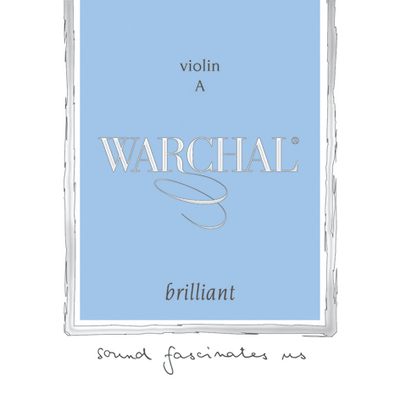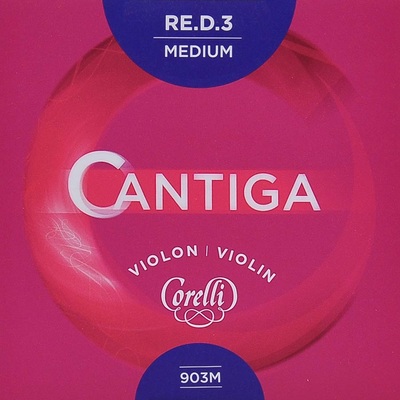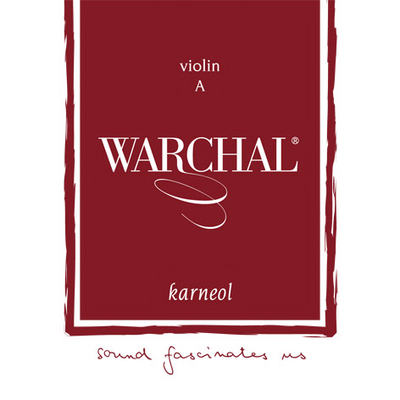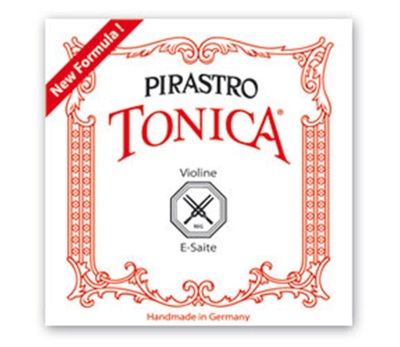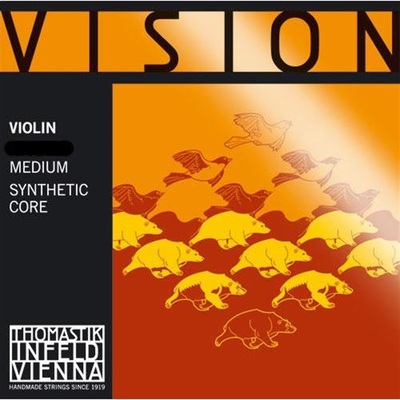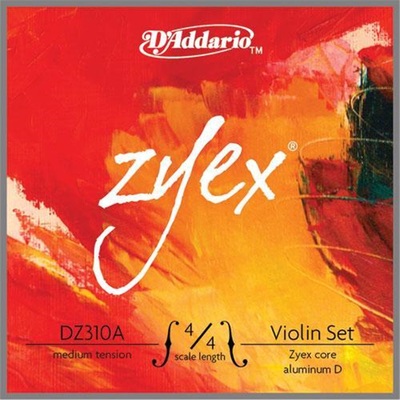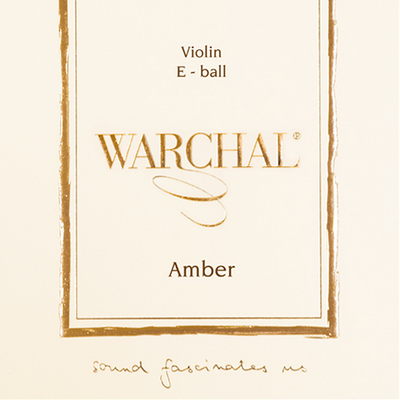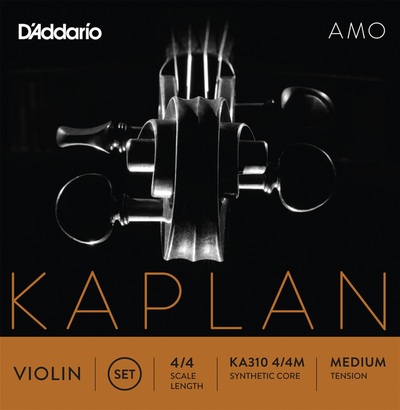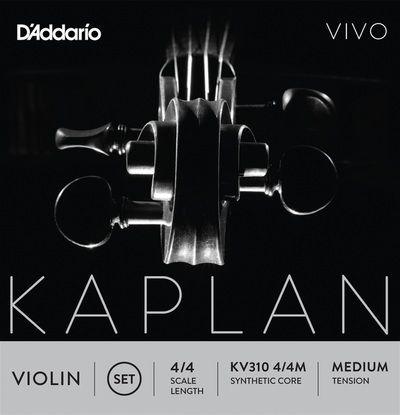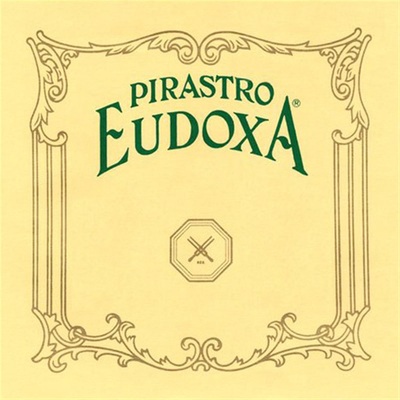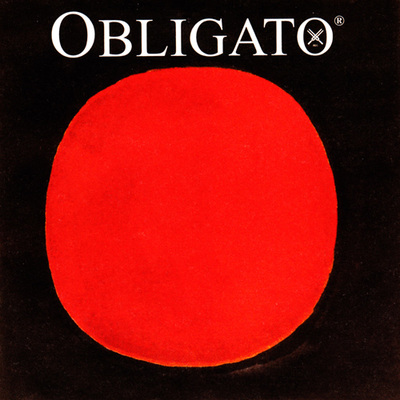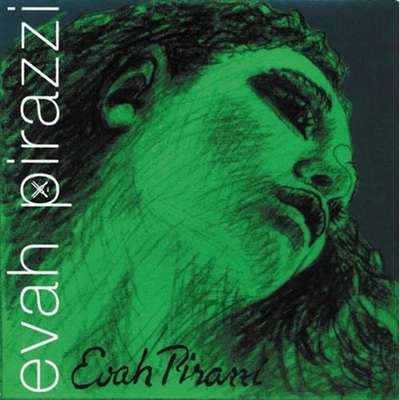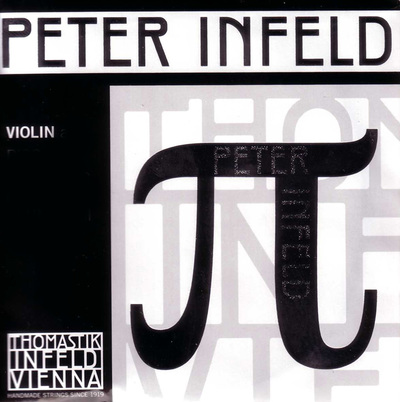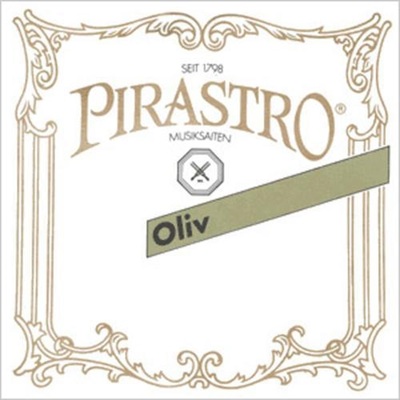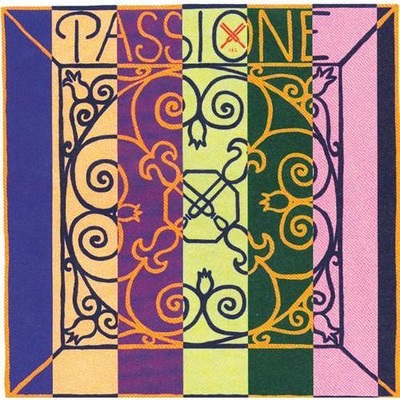Violin String Recommendations
I've been getting a wave of violin string recommendation requests lately, so I have compiled this page so that those of you without a lot of experience with the different brands out there can get a sense of what is available. If I don't particularly like a set from a manufacturer, I am not going to mention it here, so please do not consider this a comprehensive overview of all string brands. I only review sets of strings I have actually played for longer than a few weeks. One major thing to note is that each violin behaves differently with each string brand, so these are only very general concepts being covered here. You will still need to test the strings out on your instrument to see what the end result is. Generally speaking, change strings at least every six months, and more if you play a lot (more than an 1-2 hours a day). I'm on my instrument 4-5 hours a day and change my strings every 2-3 months. These recommendations are for full sized violins.
Where should you buy them? While it's important to support your local music store, particularly if you have a good relationship with them and they have excellent service, for the most part they charge far more than you can obtain them for online. I highly recommend the folks at Concord Music, and have purchased strings from them for years. However, there are many sources including Shar Music, Southwest Strings, Go Strings, IU Strings, Johnson String, etc.
Where should you buy them? While it's important to support your local music store, particularly if you have a good relationship with them and they have excellent service, for the most part they charge far more than you can obtain them for online. I highly recommend the folks at Concord Music, and have purchased strings from them for years. However, there are many sources including Shar Music, Southwest Strings, Go Strings, IU Strings, Johnson String, etc.
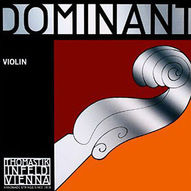
The Standard: Thomas Dominant
The first synthetic (non-gut, non-steel) string on the market made possible by the invention of nylon, Dominant strings by Thomastik-Infeld (Vienna) command the greatest market share and are by far the most popular. For many decades, they have been used as a "reference standard" particularly for makers of new instruments, to judge the sound and playability before trying other sets. They do take a few days to break in, and sound somewhat metallic and harsh at first. After the break in, they last a very long time, and gradually fade in quality as they near the end of their usable life. There are very few instruments that Dominant does not work on, however there are many newer sets from all makers (including Thomastik) that have much reduced break-in time and have the capability to emphasize different playing characteristics to enhance (or balance out) the individual properties of a specific instrument. While they used to be very inexpensive, their cost has risen dramatically in the last decade and I no longer recommend them as an "economical" choice. If you don't want to have to read anymore or make any other decisions about what strings you use, just get Dominant. Many big-name soloists do exactly this, putting Dominant strings on their high-end violins. I would avoid their E string though, as it doesn't sound very good on many violins. I recommend the very common pairing with the Pirastro Gold E or Goldbrokat E.
Shop Only (Luthier) Strings
Also note that Thomastik sells a set only through physical shops called Rondo, which is like a super-blend of the best qualities of Dominant and Vision together with an exceptionally long life. They are very clear and beautiful sounding, not harsh or brittle at all, and like Dominant work well with nearly all instruments, but have a significantly shorter break-in time. If you can find a store that sells them, I highly recommend them, despite their near-$100 price tag for a set.
Warchal has a similar product, called Timbre, which has slightly more texture than Rondo, and has an interesting spiralized E string that eliminates the whistling problem that some folks experience. Personally, I prefer the clarity that Rondo brings, although the kind of texture that Timbre has is not overwhelming like the Pirastro strings, and is likely an excellent choice for many modern violins.
The first synthetic (non-gut, non-steel) string on the market made possible by the invention of nylon, Dominant strings by Thomastik-Infeld (Vienna) command the greatest market share and are by far the most popular. For many decades, they have been used as a "reference standard" particularly for makers of new instruments, to judge the sound and playability before trying other sets. They do take a few days to break in, and sound somewhat metallic and harsh at first. After the break in, they last a very long time, and gradually fade in quality as they near the end of their usable life. There are very few instruments that Dominant does not work on, however there are many newer sets from all makers (including Thomastik) that have much reduced break-in time and have the capability to emphasize different playing characteristics to enhance (or balance out) the individual properties of a specific instrument. While they used to be very inexpensive, their cost has risen dramatically in the last decade and I no longer recommend them as an "economical" choice. If you don't want to have to read anymore or make any other decisions about what strings you use, just get Dominant. Many big-name soloists do exactly this, putting Dominant strings on their high-end violins. I would avoid their E string though, as it doesn't sound very good on many violins. I recommend the very common pairing with the Pirastro Gold E or Goldbrokat E.
Shop Only (Luthier) Strings
Also note that Thomastik sells a set only through physical shops called Rondo, which is like a super-blend of the best qualities of Dominant and Vision together with an exceptionally long life. They are very clear and beautiful sounding, not harsh or brittle at all, and like Dominant work well with nearly all instruments, but have a significantly shorter break-in time. If you can find a store that sells them, I highly recommend them, despite their near-$100 price tag for a set.
Warchal has a similar product, called Timbre, which has slightly more texture than Rondo, and has an interesting spiralized E string that eliminates the whistling problem that some folks experience. Personally, I prefer the clarity that Rondo brings, although the kind of texture that Timbre has is not overwhelming like the Pirastro strings, and is likely an excellent choice for many modern violins.
The Under $50 Sets
There are some exceptional choices in this price range, and for nearly everyone these are the sets that I recommend. Each has different playing characteristics, and depending on what your violin sounds like and what you prefer, one may be more suited to you than another. Thankfully, at their prices, you can afford to experiment, and it really is not necessary to spend more than this to obtain strings that work well.
Thomastik Alphayue is a new low-cost student set (still synthetic, not steel) that can be found for $25 or less! They are available in ALL fractional sizes and I recommend them as the best choice for all student instruments. The break in quickly, have a full and projecting sound, and feel nice under the fingers.
D'Addario Ascente is the competitor to Alphayue. It's decent, and also around $25. You'll have to try both of them to see which one sounds better on your student violin.
Warchal Karneol is a warm and round-sounding set of strings that feels very comfortable under the fingers (lower-tension). Created by Bohdan Warchal in Slovakia, this set can be found for $35. I consider them the "new Dominant" and most players are pleasantly surprised at how good Karneol sounds right away when installed. Earlier versions of the set didn't last very long (for me I wore them out after a few weeks), but they are inexpensive enough that you can keep replacing them more frequently and have the nice "new string" sound and feel.
Warchal Brilliant is a more powerful, higher-tension set that is around $50. Many of my younger students prefer the sort of sound and response that strings of this nature provide, and for instruments that don't have a lot of power, these can be just the ticket. There are other companies that produce strings like this, however Warchal is by far the most economical. There is no sacrifice in quality because of the cost though, and you can see that their windings and packaging are top-notch. There is also a Brilliant Vintage version that is lower-tension, designed for instruments that do not do well with high-tension strings.
Corelli Cantiga is a newer set from Savarez that can be found for around $50. It is constructed from a new polymer (not nylon like Dominant) that has some impressive playing characteristics. Cantiga strings emphasize resonance and overtones, and when newly installed they produce a very full ringing quality on most instruments. More than any other set of new string brands, many colleagues who have tried Cantiga find that it exceeds all their expectations, and the low price is just a bonus.
D'Addario Zyex is also available for around $45, and despite being on the market for a number of years was completely re-designed recently by D'Addario's String Designer, Fan Tao. It competes very favorably with Dominant and Cantiga, and has a short break-in time, excellent tuning stability, and comfortable feel under the fingers. I've put them on numerous student instruments and the results have been incredibly positive. If you don't like "textured" sounds and prefer something more clear-sounding, then avoid this set.
Pirastro Tonica can be found for around $45, and was reformulated some years ago to have its performance characteristics more closely match that of Dominant. I personally find it a bit rounder sounding, at an excellent price, although it doesn't always work on every instrument.
Thomastik Vision is around $50, and is a superb, projecting string with long life and an excellent feel under the fingers despite being slightly higher tension than Dominant. Up until recently when many manufacturers started introducing new string sets, this was my go-to string for players wanting to try something new. I find them very comparable to Warchal Brilliant.
There are some exceptional choices in this price range, and for nearly everyone these are the sets that I recommend. Each has different playing characteristics, and depending on what your violin sounds like and what you prefer, one may be more suited to you than another. Thankfully, at their prices, you can afford to experiment, and it really is not necessary to spend more than this to obtain strings that work well.
Thomastik Alphayue is a new low-cost student set (still synthetic, not steel) that can be found for $25 or less! They are available in ALL fractional sizes and I recommend them as the best choice for all student instruments. The break in quickly, have a full and projecting sound, and feel nice under the fingers.
D'Addario Ascente is the competitor to Alphayue. It's decent, and also around $25. You'll have to try both of them to see which one sounds better on your student violin.
Warchal Karneol is a warm and round-sounding set of strings that feels very comfortable under the fingers (lower-tension). Created by Bohdan Warchal in Slovakia, this set can be found for $35. I consider them the "new Dominant" and most players are pleasantly surprised at how good Karneol sounds right away when installed. Earlier versions of the set didn't last very long (for me I wore them out after a few weeks), but they are inexpensive enough that you can keep replacing them more frequently and have the nice "new string" sound and feel.
Warchal Brilliant is a more powerful, higher-tension set that is around $50. Many of my younger students prefer the sort of sound and response that strings of this nature provide, and for instruments that don't have a lot of power, these can be just the ticket. There are other companies that produce strings like this, however Warchal is by far the most economical. There is no sacrifice in quality because of the cost though, and you can see that their windings and packaging are top-notch. There is also a Brilliant Vintage version that is lower-tension, designed for instruments that do not do well with high-tension strings.
Corelli Cantiga is a newer set from Savarez that can be found for around $50. It is constructed from a new polymer (not nylon like Dominant) that has some impressive playing characteristics. Cantiga strings emphasize resonance and overtones, and when newly installed they produce a very full ringing quality on most instruments. More than any other set of new string brands, many colleagues who have tried Cantiga find that it exceeds all their expectations, and the low price is just a bonus.
D'Addario Zyex is also available for around $45, and despite being on the market for a number of years was completely re-designed recently by D'Addario's String Designer, Fan Tao. It competes very favorably with Dominant and Cantiga, and has a short break-in time, excellent tuning stability, and comfortable feel under the fingers. I've put them on numerous student instruments and the results have been incredibly positive. If you don't like "textured" sounds and prefer something more clear-sounding, then avoid this set.
Pirastro Tonica can be found for around $45, and was reformulated some years ago to have its performance characteristics more closely match that of Dominant. I personally find it a bit rounder sounding, at an excellent price, although it doesn't always work on every instrument.
Thomastik Vision is around $50, and is a superb, projecting string with long life and an excellent feel under the fingers despite being slightly higher tension than Dominant. Up until recently when many manufacturers started introducing new string sets, this was my go-to string for players wanting to try something new. I find them very comparable to Warchal Brilliant.
The $50-$80 Sets
The strings in this category offer some additional performance features that don't show up in the previous category. In particular, many of them add a "texture" to the sound produced that is very pleasant. For example, my instrument, which tends to have a fairly clear, projecting, sound, the additional texture it provides is quite attractive and at least subjectively improves the overall tone of the instrument. I've included some of the gut strings that I used to play on the past and like a lot, but do not usually recommend to students because of tuning stability challenges due to temperature and humidity.
Warchal Amber is a synthetic set with very gut-like tonal properties, and can be found for $65-$70 most places, although if you've never ordered one from Warchal directly you can get a single trial set for less. Most interesting is the special spiral E string, where the part with the tight coil unravels when you install it. The E has a warm and round tone with no harsh edge, and absolutely does not whistle no matter how hard you try.
D'Addario Kaplan Amo/Vivo are two newer sets designed by D'Addario String Designer, Fan Tao. The Amo set has a texture to the sound that is very attractive for more plain sounding instruments. The Vivo set brings brilliance and power to darker, more covered instruments. They can be found online for just under $80 a set, and for their cost they have no equal...they're incredible, at any price!
Pirastro Eudoxa has been a popular gut set for many decades, and the go-to strings for most professionals prior to the arrival of Thomastik Dominant on the scene over fifty years ago. I played on it all through junior high and high school, and have returned to it. If you haven't played on gut before and want to acquaint yourself with the qualities of these strings, Eudoxa is a great place to start. Gut strings have a slight delay in response you have to get used to, but their resonance, playability, and feel under the fingers is unmatched by synthetics. It's hard for me to describe with words, but when you play pizzicato on them, the strings go "boing" instead of "twang." Depending on your instrument, you'll want to see whether the standard (non-rigid) or stiff (rigid) G and D strings work better for you. There is also a "Brilliant" version of the G and D strings that are thinner and brighter sounding than the standard Eudoxas, but I don't like them very much.
The strings in this category offer some additional performance features that don't show up in the previous category. In particular, many of them add a "texture" to the sound produced that is very pleasant. For example, my instrument, which tends to have a fairly clear, projecting, sound, the additional texture it provides is quite attractive and at least subjectively improves the overall tone of the instrument. I've included some of the gut strings that I used to play on the past and like a lot, but do not usually recommend to students because of tuning stability challenges due to temperature and humidity.
Warchal Amber is a synthetic set with very gut-like tonal properties, and can be found for $65-$70 most places, although if you've never ordered one from Warchal directly you can get a single trial set for less. Most interesting is the special spiral E string, where the part with the tight coil unravels when you install it. The E has a warm and round tone with no harsh edge, and absolutely does not whistle no matter how hard you try.
D'Addario Kaplan Amo/Vivo are two newer sets designed by D'Addario String Designer, Fan Tao. The Amo set has a texture to the sound that is very attractive for more plain sounding instruments. The Vivo set brings brilliance and power to darker, more covered instruments. They can be found online for just under $80 a set, and for their cost they have no equal...they're incredible, at any price!
Pirastro Eudoxa has been a popular gut set for many decades, and the go-to strings for most professionals prior to the arrival of Thomastik Dominant on the scene over fifty years ago. I played on it all through junior high and high school, and have returned to it. If you haven't played on gut before and want to acquaint yourself with the qualities of these strings, Eudoxa is a great place to start. Gut strings have a slight delay in response you have to get used to, but their resonance, playability, and feel under the fingers is unmatched by synthetics. It's hard for me to describe with words, but when you play pizzicato on them, the strings go "boing" instead of "twang." Depending on your instrument, you'll want to see whether the standard (non-rigid) or stiff (rigid) G and D strings work better for you. There is also a "Brilliant" version of the G and D strings that are thinner and brighter sounding than the standard Eudoxas, but I don't like them very much.
The Expensive Sets
Once you cross the $80 threshold, the sky is the limit. There are premium string brands out there that offer just about every kind of playing characteristic you might want, but they can top $100 per set. Wait till they come on sale, they'll drop below $80 sometimes.
Pirastro Obligato is the warmer, darker, offering from Pirastro. They sound absolutely fantastic when first installed, and were very popular when they were introduced. As they age, they lose some of their focus and the projection really falls off. They are very enjoyable to play on, being lower-tension, but my colleagues who use them regularly replace them very frequently compared to other brands.
Pirastro Evah Pirazzi is probably the most popular premium string these days. They are very powerful (to the point of being brittle sounding on brighter instruments), and very consistent performance-wise. A student who graduated from the Cleveland Institute commented to me that they felt that because their violin wasn't expensive and nice, they put a new set of EPs on every three or four weeks so that they could always have that powerful "new string" sound and have just a little something to keep up with people with 50k, 100k instruments that sound substantially better.
Pirastro Evah Pirazzi Gold is somewhere in between Obligato and Evah Pirazzi, more on the powerful, brighter end. However, like Kaplan Amo, it adds a distinct texture to the sound that is initially very attractive. I really like the power and depth that these strings bring to most instruments, but past a month of playing they become very crunchy sounding, with a rather unpleasant tone quality at soft dynamics. If cost is not an issue and you play a lot, just throw a new set on each month and enjoy! A shop owner has commented, "EP/EPG sells instruments," and they regularly put them on instruments shown for sale. The Gold-wound G is interesting, but I'd avoid it...despite the warmth it has, the response time is noticeably slower than the standard Silver G, which better matches the other strings in the set.
Pirastro Perpetual is their high tension, clearer-sounding string that competes with Thomastik's Peter Infeld. I did like it slightly better than EP or EPG, but it has the same longevity flaw as the other Pirastro strings. It is fantastic for the first couple weeks you have them on, and then they sound awful. If you can slap on a new set of these every three weeks (this is assuming 3-4 hours a day of playing), then they work great...
Thomastik Peter Infeld (Pi) is literally the most expensive set of violin strings you can buy, mainly due to a titanium-plated E string that runs ~$30 on its own. The strings have a lot of overtones and power, yet don't go to the abrasive end like Evah Pirazzi. They have a long lifespan and very consistent tuning behavior. Wonderful strings all around, if you can afford to buy them regularly.
Thomastik Dynamo is the latest premium string from this company, and has a sky-high price tag, $130+ per set no matter where you buy it. If you already like Rondo, it's worth a try to see if it sounds better on your violin. Personally, I didn't like the E string very much, it lacked the resonance and brilliance of the Rondo or Goldbrokat E strings.
Pirastro Oliv is the top-end gut set from Pirastro. They are more powerful than their Eudoxa set but don't sound was warm, and for those who want the most projection from gut strings, they are definitely worth a try. I prefer Eudoxa to Oliv. There are other gut sets, but they are beyond the scope of this overview...I would go check out Tricolore (Gamut), as well as the handmade strings by Damien Dlugolecki.
Pirastro Passione/Passione Solo are interesting sets that are gut core, but include some synthetic winding technology to reduce their break-in time and improve their tuning stability in different environmental conditions. If you love gut but dealing with the tuning drives you crazy, this is the set for you, or if you want to try gut but don't want to deal with the common issues, then this set is also for you. The solo version is slightly more powerful but less colorful sounding than the regular one. I'm not a huge fan of these...they straddle the fence but don't have the majority of the positive qualities of gut and synthetics that one would expect from such a hybrid.
Once you cross the $80 threshold, the sky is the limit. There are premium string brands out there that offer just about every kind of playing characteristic you might want, but they can top $100 per set. Wait till they come on sale, they'll drop below $80 sometimes.
Pirastro Obligato is the warmer, darker, offering from Pirastro. They sound absolutely fantastic when first installed, and were very popular when they were introduced. As they age, they lose some of their focus and the projection really falls off. They are very enjoyable to play on, being lower-tension, but my colleagues who use them regularly replace them very frequently compared to other brands.
Pirastro Evah Pirazzi is probably the most popular premium string these days. They are very powerful (to the point of being brittle sounding on brighter instruments), and very consistent performance-wise. A student who graduated from the Cleveland Institute commented to me that they felt that because their violin wasn't expensive and nice, they put a new set of EPs on every three or four weeks so that they could always have that powerful "new string" sound and have just a little something to keep up with people with 50k, 100k instruments that sound substantially better.
Pirastro Evah Pirazzi Gold is somewhere in between Obligato and Evah Pirazzi, more on the powerful, brighter end. However, like Kaplan Amo, it adds a distinct texture to the sound that is initially very attractive. I really like the power and depth that these strings bring to most instruments, but past a month of playing they become very crunchy sounding, with a rather unpleasant tone quality at soft dynamics. If cost is not an issue and you play a lot, just throw a new set on each month and enjoy! A shop owner has commented, "EP/EPG sells instruments," and they regularly put them on instruments shown for sale. The Gold-wound G is interesting, but I'd avoid it...despite the warmth it has, the response time is noticeably slower than the standard Silver G, which better matches the other strings in the set.
Pirastro Perpetual is their high tension, clearer-sounding string that competes with Thomastik's Peter Infeld. I did like it slightly better than EP or EPG, but it has the same longevity flaw as the other Pirastro strings. It is fantastic for the first couple weeks you have them on, and then they sound awful. If you can slap on a new set of these every three weeks (this is assuming 3-4 hours a day of playing), then they work great...
Thomastik Peter Infeld (Pi) is literally the most expensive set of violin strings you can buy, mainly due to a titanium-plated E string that runs ~$30 on its own. The strings have a lot of overtones and power, yet don't go to the abrasive end like Evah Pirazzi. They have a long lifespan and very consistent tuning behavior. Wonderful strings all around, if you can afford to buy them regularly.
Thomastik Dynamo is the latest premium string from this company, and has a sky-high price tag, $130+ per set no matter where you buy it. If you already like Rondo, it's worth a try to see if it sounds better on your violin. Personally, I didn't like the E string very much, it lacked the resonance and brilliance of the Rondo or Goldbrokat E strings.
Pirastro Oliv is the top-end gut set from Pirastro. They are more powerful than their Eudoxa set but don't sound was warm, and for those who want the most projection from gut strings, they are definitely worth a try. I prefer Eudoxa to Oliv. There are other gut sets, but they are beyond the scope of this overview...I would go check out Tricolore (Gamut), as well as the handmade strings by Damien Dlugolecki.
Pirastro Passione/Passione Solo are interesting sets that are gut core, but include some synthetic winding technology to reduce their break-in time and improve their tuning stability in different environmental conditions. If you love gut but dealing with the tuning drives you crazy, this is the set for you, or if you want to try gut but don't want to deal with the common issues, then this set is also for you. The solo version is slightly more powerful but less colorful sounding than the regular one. I'm not a huge fan of these...they straddle the fence but don't have the majority of the positive qualities of gut and synthetics that one would expect from such a hybrid.
